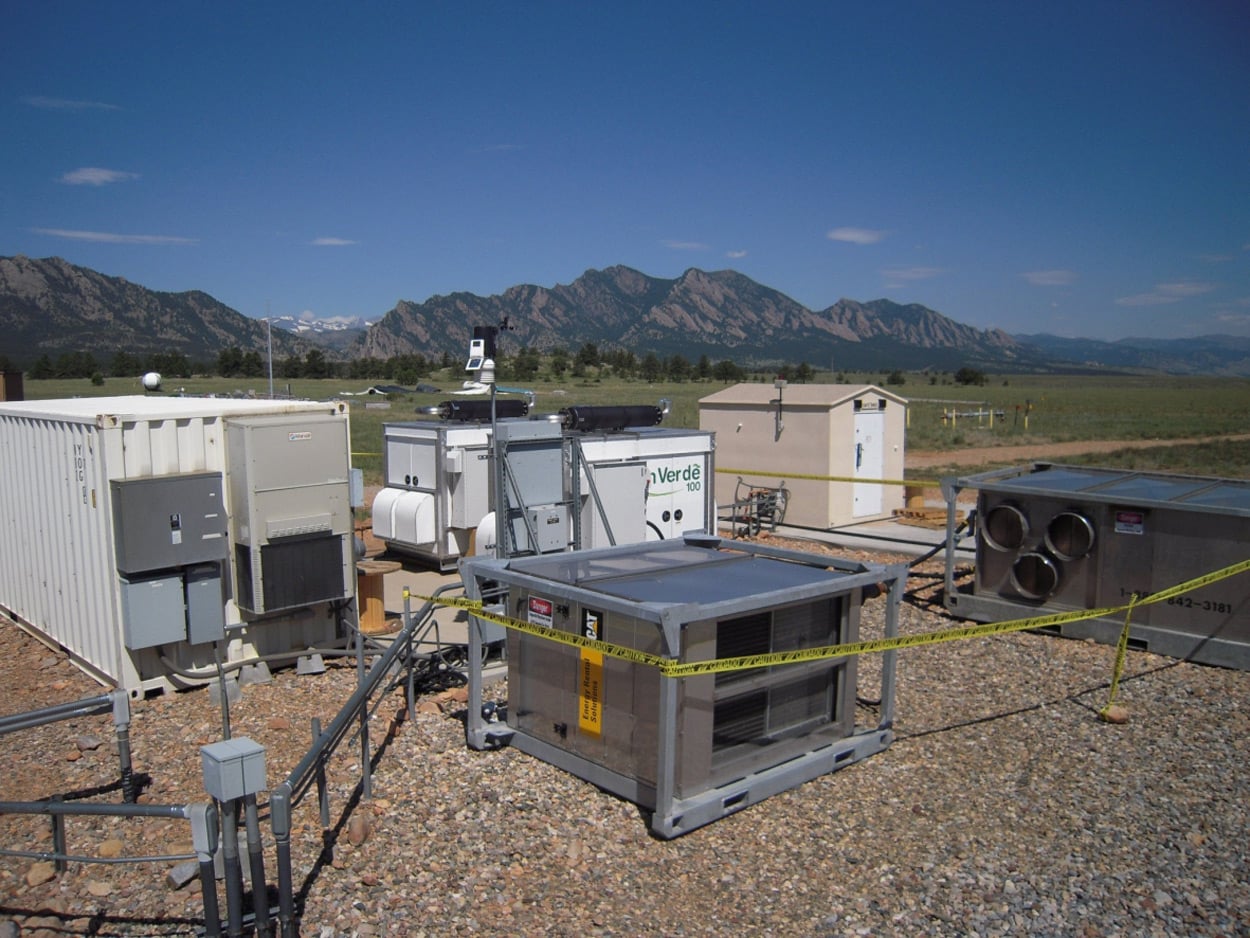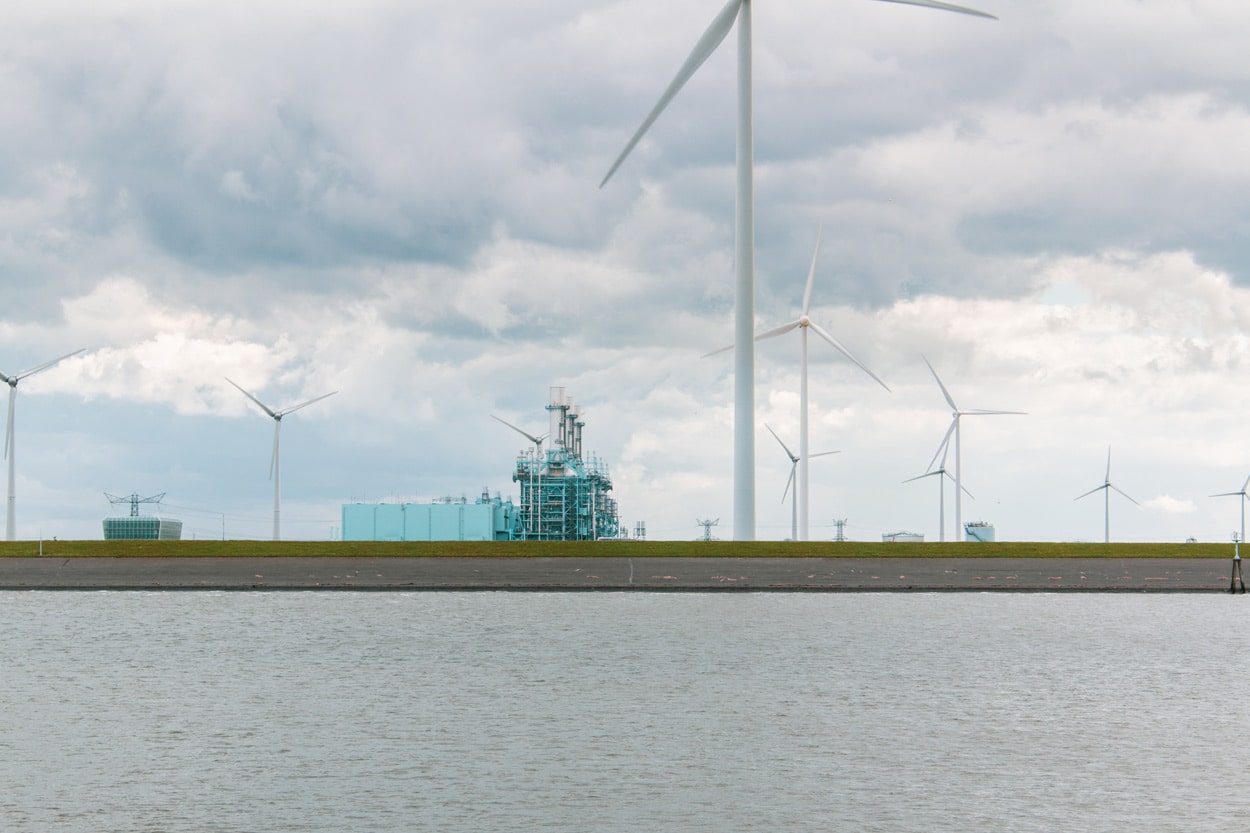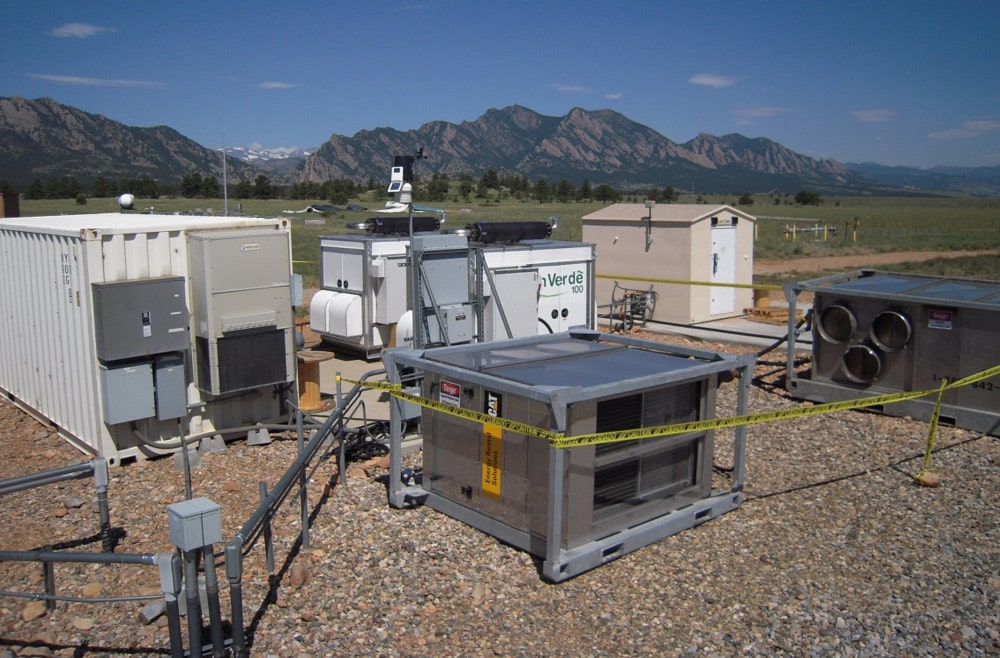Microgrids are a special sub-set of Distributed Energy Systems (DES), primarily defined by their ability to operate independently of the larger grid in “islanded”, aka “stand-alone” mode. But how do microgrids work? Specifically, microgrids can dynamically island, that is, they are grid-connected systems that have a Point of Common Coupling (PCC) with a larger power grid, but can automatically disconnect and maintain power supply to local loads in the event of an outage from the utility service. The term for fully off-grid systems such as those used in remote communities or industrial sites, with no connection to a larger grid, is “minigrid”. These terms are often misinterpreted to refer to the size of the system, which they do not; a microgrid may be larger or smaller than a minigrid, in area served and/or in nameplate capacity. The distinction between the two is the architecture, with microgrids being able to dynamically island, while minigrids are “fully islanded” all the time.
What Is A Microgrid Controller?
At the heart of either a microgrid or a minigrid is the controller, which can be quite sophisticated and serves as the brain of the system. Microgrid controllers are customizable through both hardware configuration and software programming to perform different functions and in grid-connected systems can be used to create revenue from the selling energy back to the grid or providing other ancillary services to the utility, depending on local market rules and utility programs. Microgrid controllers can also be programmed to use the cleanest available energy resources from among the installed onsite options, to meet emissions reduction goals.
According to the U.S. Department of Energy, a microgrid connects to the surrounding power distribution system in a way that synchronizes with the voltage and frequency of the main grid unless there is an outage on the main grid or some other reason to disconnect. Switchgear can be set to either automatically or manually disconnect from the main grid.

The microgrid controller manages the real time operation of the system, for example sensing the loss of grid electricity during a power outage, then automatically islanding and bringing online backup generation sources to restore power to load. Examples of onsite generation assets that may be part of a microgrid include diesel or natural gas reciprocating engines or turbines, solar photovoltaics (PV), or wind turbines, although the presence of onsite generation does not automatically create a microgrid. The controller is an essential component to enable the islanding functionality, and also balances loads, energy storage, and generation when connected to the grid.
Microgrid controllers also serve to protect the system by operating breakers, automatically reducing generation output to avoid battery overloading, or shedding non-essential loads if there is not enough power available.
Another important function of microgrids is to react to price signals in the market, for instance reacting to utility time-of-use rates or electricity wholesale market conditions in order to produce the highest return on investment.
Advanced microgrid controllers act as forecasters, using weather and utility data then analyzing what resources are available in the system to manage the energy requirements, delivering lowest-cost energy and reducing carbon emissions. They can also be configured with multi-metered or campus systems, or even to share power with another nearby microgrid and help both perform optimally. Other functions are load-following, peak-shifting, real-time data collection and visualization, energy storage integration and demand response.

Who Sets Microgrid Standards?
The widely varying configuration and design of microgrids create different dynamics that require they be modeled in a particular way and cybersecurity must also be addressed. Industry standards for microgrid controllers are also under development, including by the Institute of Electrical and Electronics Engineers. According to IEEE, the scope of the standard is to address the functions above the component control level that are common to all microgrids regardless of topology, configuration, or jurisdiction. Standard testing procedures are also under development. Research in microgrid technologies continues at organizations such as the Massachusetts Institute of Technology and National Renewable Energy Laboratory, as well as private sector R&D, that is continuing to advance the capabilities and sophistication of microgrid controllers.
How Do Microgrids Work?
If you have more questions about microgrids or Distributed Energy Systems (DES), contact VECKTA today!
For more articles related to “How do microgrids work?” visit our news page here.
Photo credits: (Unsplash) (National Renewable Energy Laboratory)
